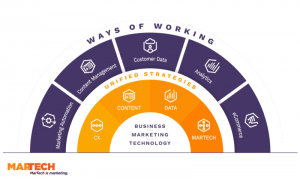
Revenue-based financing is fast becoming a popular financing model for revenue-generating startups and eCommerce businesses, and for good reason.
The qualification process is fast and easy, enabling founder-led, direct to consumer brands to address inevitable short-term cash flow needs. Typically, these funding gaps arise when a large inventory order is made or when a significant marketing investment is planned. Scaling up is often hamstrung by limited cash flow.
For the business owner, the main advantage of this type of financing is that it generally comes with no requirements for personal guarantees, collateral, or equity stakes. The payback amount is linked to trading revenues, so you only pay it back as you generate revenue. The more revenue you make, the quicker you pay it back, and there are no penalties for early payback.
When is revenue-based financing better for SMBs?
Going to a traditional lender, such as a bank, can be complicated, time-consuming, and expensive. Seeking investment is painful, as the equity dilution is typically unpalatable to address what is ultimately a short-term cash flow challenge. Early-stage companies can, in fact, spend up to 50% of investments received on Facebook and Google ads alone–which seems like madness!
Revenue-based financing offers several advantages to the traditional ways of raising capital to support short-term growth investments, including:
- Cost – the cost of the cash advance is typically fixed and there are no hidden fees for paying back early or late. Today, borrowers can expect to pay a fixed fee ranging from 6% to 12% of the amount received. So, for example, a company borrows $ 100,000 and with a fixed fee of 6%; they will pay back exactly $ 106,000, regardless of how long it takes to pay this down.
- Speed – underwriting of this type of capital advance is based primarily on analysis of trading history; i.e. your ability to pay back the advance. Providers of the service will link in real-time to your eCommerce platform or open banking solution and can provide an offer relevant to your situation within minutes. This means that, overall, you can expect to receive funds within 24-48 hours of your application.
- Revenue-share – loans are typically paid back at a fixed amount each month. Revenue-based financing is paid back as a percentage of trading revenues. You agree with the provider what percentage of revenues you want to pay back and this amount is deducted based on each day’s actual trading volume. For example, you agree to pay back 5% of daily revenues. On day 1, you generate $ 50,000 in sales; $ 2,500 is paid back. On day 2, you generate $ 10,000 in sales and you only pay back $ 500.
- Requirements – or the lack of requirements for personal guarantees, collateral or equity all mean that revenue-based finance is a relatively low-risk way to get the injection you need to accelerate growth. This type of financing is typically short-term with payback periods tending to range from 4-8 months; therefore, the primary criterion for approval is the ability to pay back in a short period.
- Smart money – a number of providers in this space have set out to not just provide the capital, but also support mechanisms to assist founders in making the capital work harder for them. The business intelligence and optimization offerings from providers are usually concentrated on improving the returns from the capital deployed. This, of course, is in everyone’s interest – the better a brand performs in putting the capital to use, the more likely it is to pay back the full amount more quickly.
The fewer restrictions associated with revenue-based financing means that it is a relatively easy approval process. The main requirement for an eCommerce operation is to link some or all of your online store, analytics solution and marketing platforms to the finance provider. They then typically run their algorithms across your trading data and this gives their internal teams an initial go/no-go indication within seconds. There is then, typically, a human review which can take a few hours, but usually within 24 hours, you can expect to receive an offer with some options.
How does repayment work?
The options provided to a borrower will typically offer choice around the amount of capital received, the percentage deducted daily from revenues and the payback period. All three elements are linked since the higher the revenue-share the quicker the capital and fixed fee are paid back. The revenue-share percent can vary from as low as 3-4% per day up to 20-25%. The choice is important to ensure that you retain enough earned revenues to support other growth activities across your business.
Are there any catches?
One thing to keep in mind is that the providers will try to limit what the capital is spent on. They do this in two ways. One, they will provide a pre-paid debit card, or equivalent, that is restricted to certain types of activities. For example, if you seek capital for marketing, they may limit this card to the ad platforms (such as Google and Facebook), marketing software, or agency providers that you use.
Secondly, you can upload invoices for services or inventory and the provider will pay these directly on your behalf. In this way, the providers protect themselves from you buying yourself that nice new Tesla you’ve had your eye on for some time!
If you don’t pay back the capital and fee within the agreed time (because your revenues didn’t materialize as expected) then, typically, there are no additional charges – but do check the T&Cs. Some providers will simply allow you to pay back when you can, while others may increase the percentage of revenue debited on a daily basis. Again, always check the terms and conditions of your offer.
Shop around for bundled services
Money may be cheap these days, but you still want to ensure you make it work hard for you when you have it. Check out the support services offered by each provider. Some will come with out of the box business or marketing intelligence solutions. Others will provide more robust automated optimization solutions to ensure you achieve the highest return on investment, especially from your marketing and advertising investments.
Business & Finance Articles on Business 2 Community
(51)
Report Post





